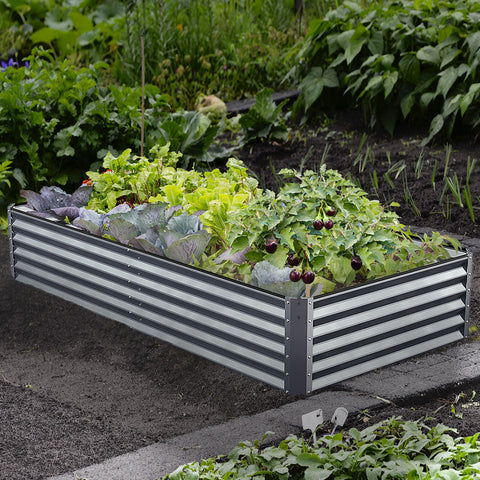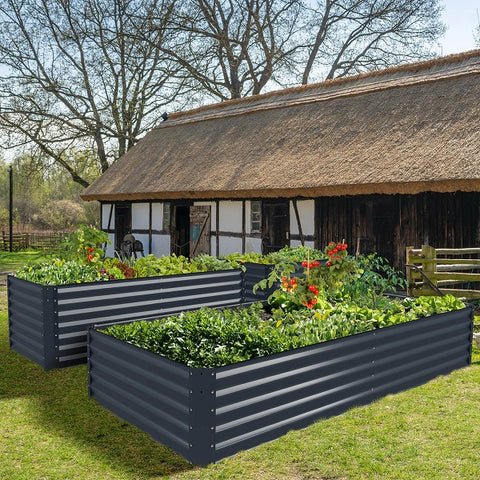Learning to grow your own vegetables can be very rewarding. You can get a variety of healthy and delicious vegetables that you can easily add to your diet. Not to mention, growing vegetables can be a lot of fun and very money saving.The following content also has some reference value for raised garden beds.
In gardening, you should carefully consider the location of your vegetable garden, as this will affect your level of success. Here are the most important factors to consider:
Sunlight: Plants participate in photosynthesis, which is an important process for plants to obtain energy from sunlight. Most vegetables need plenty of sunlight to grow, usually at least 6 hours a day. Therefore, you should find an area in your garden that receives a lot of sunlight. South-facing gardens tend to get the most sunlight.
Soil quality: Vegetables grow best in rich, moist soil. The land should also have good soil drainage. This means that the water drains out of the ground very quickly. When soil is not well drained, the soil starts to dry out. Fortunately, you can perform a soil drainage test to determine this factor.
Water supply: In sunny weather, your garden may experience a drought. This means that the soil and grass will become dry. In this case, you may need to provide your vegetables with extra water to keep them healthy. When this happens, the garden should be close to a water supply, such as an outdoor faucet.
Aesthetics: If you want your garden to look organized and aesthetically pleasing, you need to consider what location looks best. It's best to separate the different areas so that they look more organized.
Airflow: You may be surprised to learn that airflow is an important consideration when designing a garden. The reason for this is that if the airflow is bad, your plants will become weak. Not to mention, air currents are thought to have an impact on the spread of mold and plant diseases.
Take all these factors into consideration and you can find the perfect plot for your vegetable garden. Therefore, you can grow healthy vegetables that ripen quickly and efficiently.
Choose the type of garden you want
You may be surprised to find several different vegetables in the garden. Before you start growing vegetables, you have to think carefully about what type of garden you want to focus on. Unless you have a huge garden, you may not be able to build a garden in many forms.
Here are some of the main types of garden you should consider:
Container garden
Instead of growing vegetables or other plants in the soil, these gardens use different forms of containers. These containers include POTS and hanging baskets. While these methods are commonly used for growing beautiful plants, container gardens also work for vegetables.
One of the advantages of container gardens is that they are highly mobile and portable. Also, they don't attract as many weeds as other types of gardens. In addition, container gardens are easy for beginners to set up.
However, container gardens can also be quite limited. There is less room for roots to grow, which means these containers may not be suitable for some types of vegetables. For example, if you're growing a bunch of lettuce, you'll need to use fairly large containers. In addition, they are difficult for gardeners to disinfect.
Raised beds
Raised beds are often used for gardening. They are especially popular with fruits and vegetables because they are convenient and beautiful. Essentially, raising the bed is a way to prevent plants from growing on the ground by raising the soil.
There are many benefits to using raised beds in your garden. First of all, they look great! Therefore, if you want to create an aesthetically pleasing vegetable garden, raised beds are a good option.
In addition, the use of raised seedbeds increases soil temperature. As a result, vegetables can start growing faster and earlier in the season. Not to mention, they improve drainage and ensure that you don't have to bend over as often while gardening.









